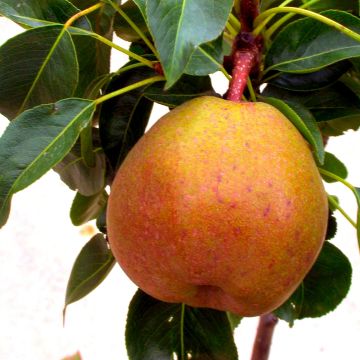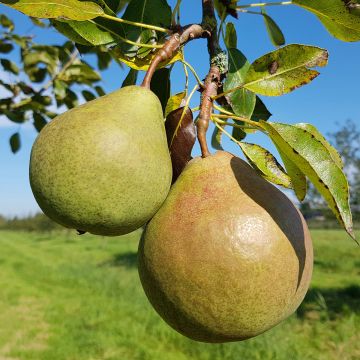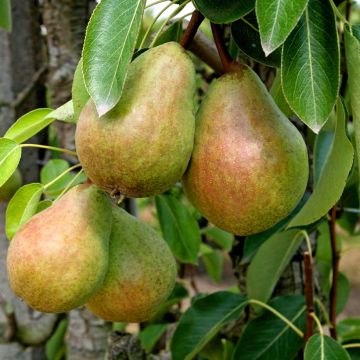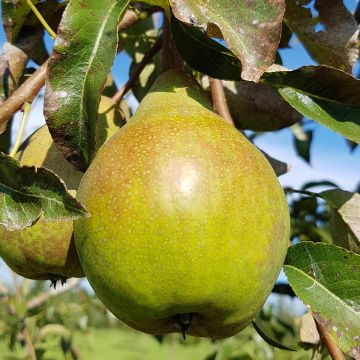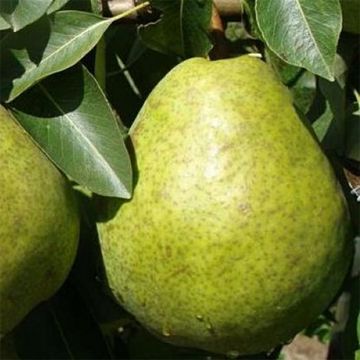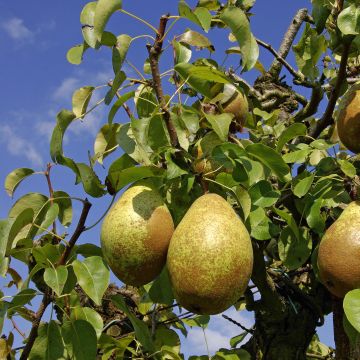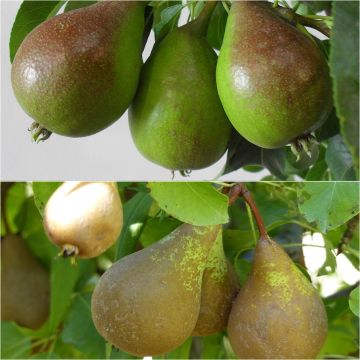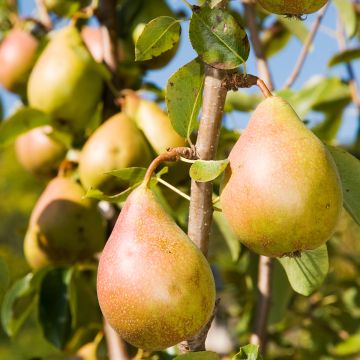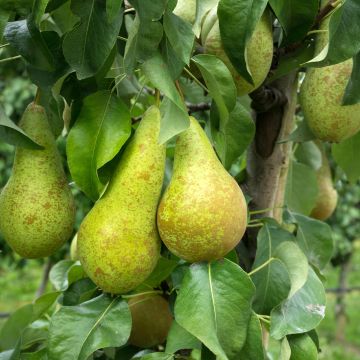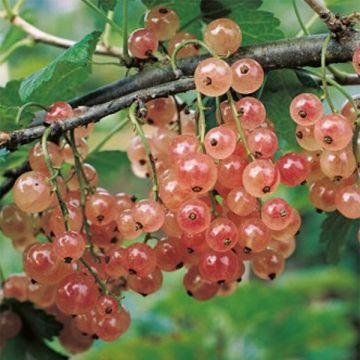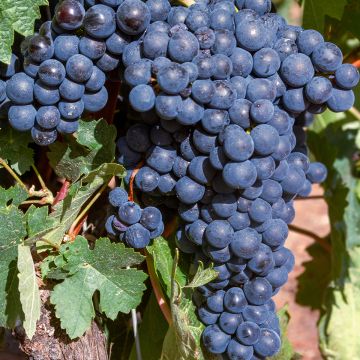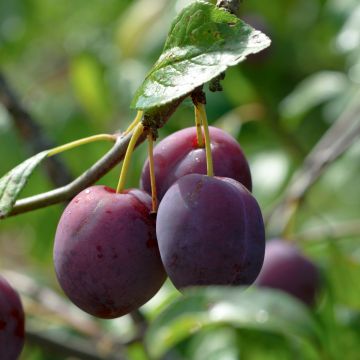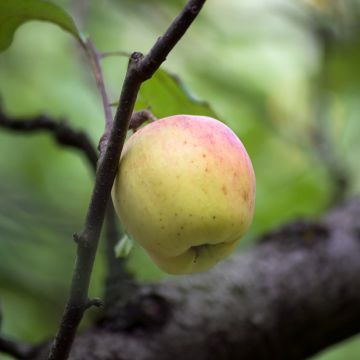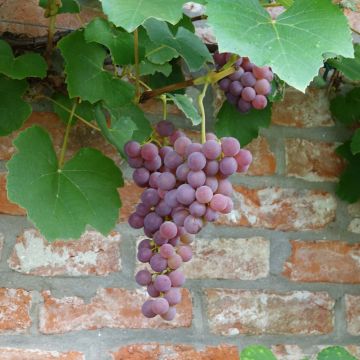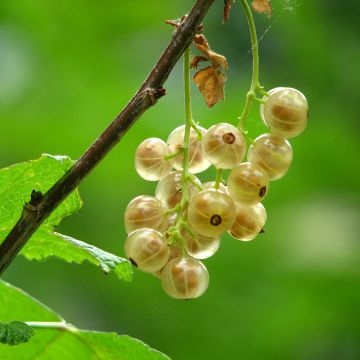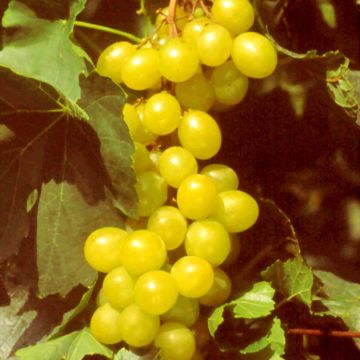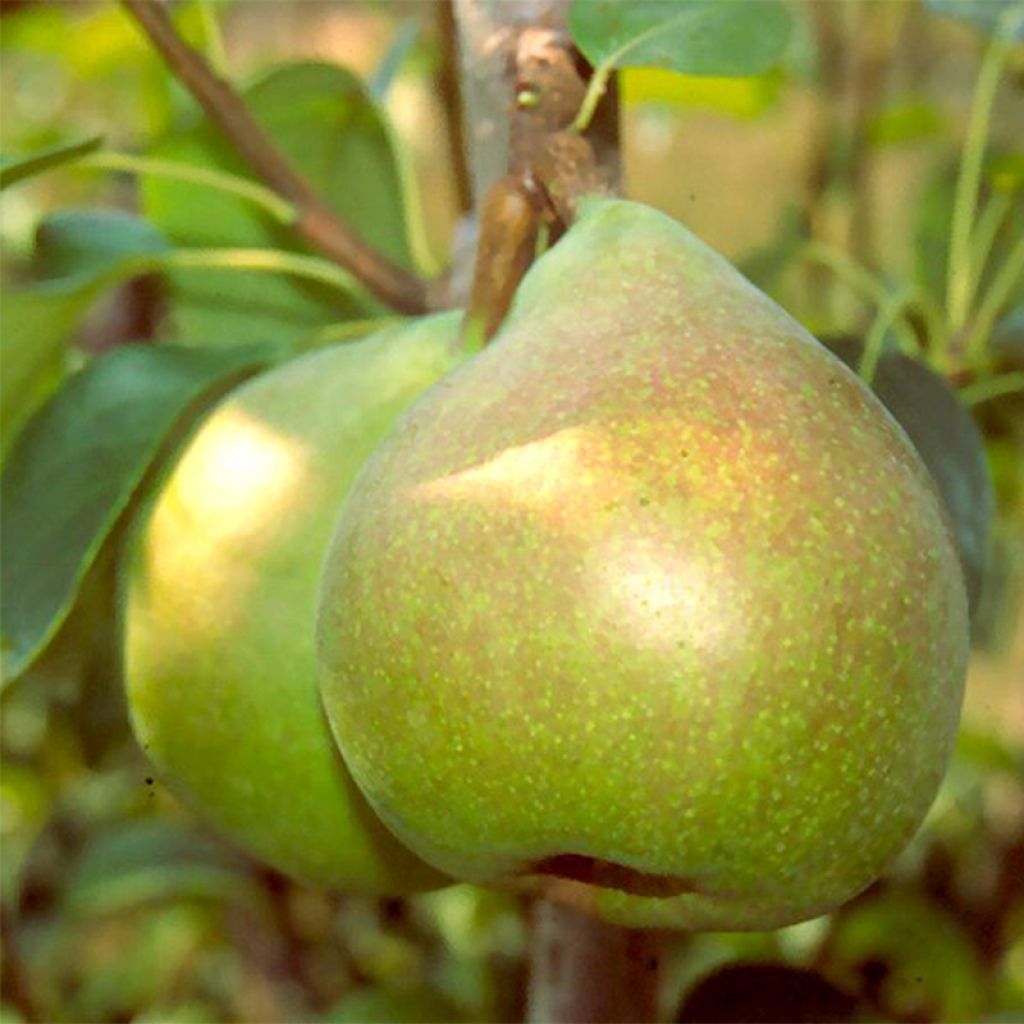

Pyrus communis Doyenné du Comice - Pear Tree
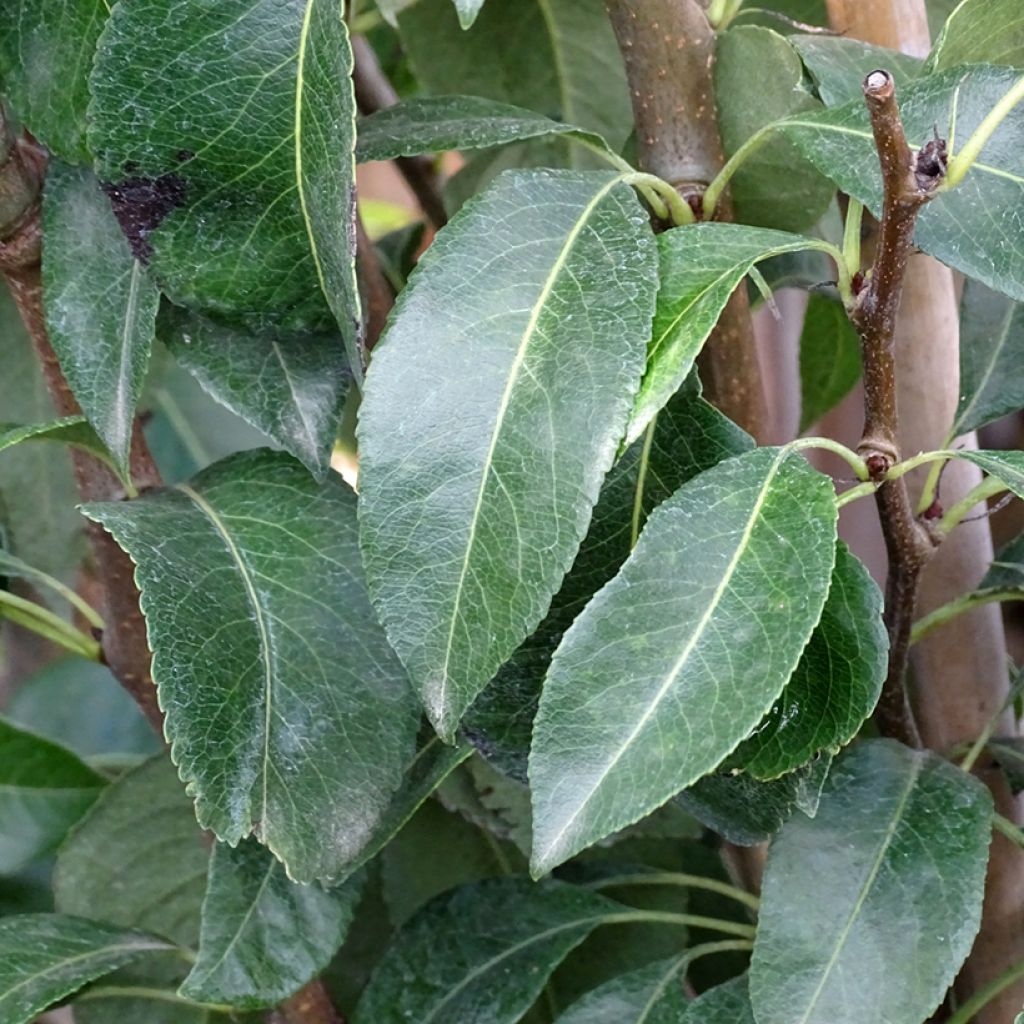

Pyrus communis Doyenné du Comice - Pear Tree
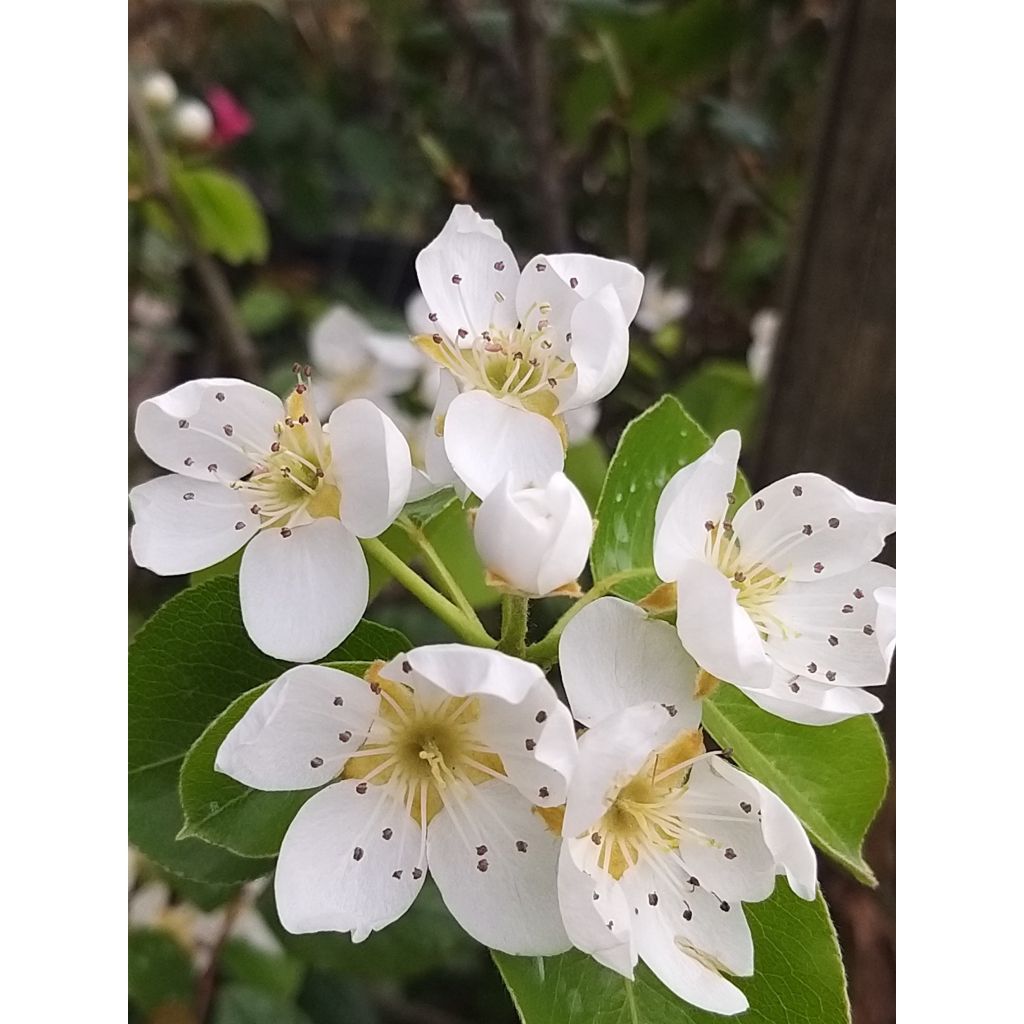

Pyrus communis Doyenné du Comice - Pear Tree
Pyrus communis Doyenné du Comice - Pear Tree
Pyrus communis Doyenné du Comice
Common Pear, European Pear
This item cannot be shipped to the selected country
Oversize package delivery charge from €6.90
Oversize package delivery charge from €6.90
Oversize package delivery charge from €6.90
Oversize package delivery charge from €6.90
Oversize package delivery charge from €6.90
Delivery to Corse prohibited
More information
Schedule delivery date,
and select date in basket
This plant carries a 6 months recovery warranty
More information
We guarantee the quality of our plants for a full growing cycle, and will replace at our expense any plant that fails to recover under normal climatic and planting conditions.
Oversize package: home delivery by special carrier from €6.90 per order..
Express home delivery from €8.90.
Oversize package: home delivery by special carrier from €6.90 per order..
Express home delivery from €8.90.
Oversize package: home delivery by special carrier from €6.90 per order..
Express home delivery from €8.90.
Oversize package: home delivery by special carrier from €6.90 per order..
Express home delivery from €8.90.
Oversize package: home delivery by special carrier from €6.90 per order..
Express home delivery from €8.90.
Delivery to Corse prohibited: UE law prohibits the import of this plant from mainland France to Corse as part of the fight against Xylella fastidiosa. Please accept our sincere apologies.
More information


Description
The Comice Pear tree (Pyrus communis) is a vigorous variety that produces large, bulging fruits with a green-yellow colour. Their creamy white flesh is juicy and aromatic. They are well-suited for storage. Plant in autumn or spring for a harvest starting in late September.
The Comice variety produces large, bulging fruits with a thin skin and a green-yellow colour. Its fine, juicy, and aromatic flesh is highly appreciated. The fruits are ready to be harvested when they easily detach from the tree by gently twisting the fruit. This variety is particularly well-suited for storage. Place the pears on wooden shelves, with the stem facing upwards, and store them in a cool and airy place. Pears can be consumed raw or cooked, in desserts, in syrup, or in certain savory dishes.
The Comice variety originates from Maine-et-Loire. The flowers, which are pinkish-white in colour, appear around April. They then transform into fruits, which can be harvested starting in late September for this variety. It is necessary to have another pear tree nearby, such as William or Conference, to ensure good pollination. The Comice variety can be subject to alternate bearing, resulting in sometimes irregular production depending on the year.
The pear tree, belonging to the Rosaceae family, is a fruit tree appreciated for its spring flowering and delicious fruits. It has an upright habit, with ovate, deciduous leaves of dark green color. The pear tree can reach a height of 3 to 10m (10 to 33ft) depending on the shape and pruning. Hardy, the pear tree can be planted in orchards or gardens, in free-standing form or trained on a support.
Report an error about the product description
Pyrus communis Doyenné du Comice - Pear Tree in pictures
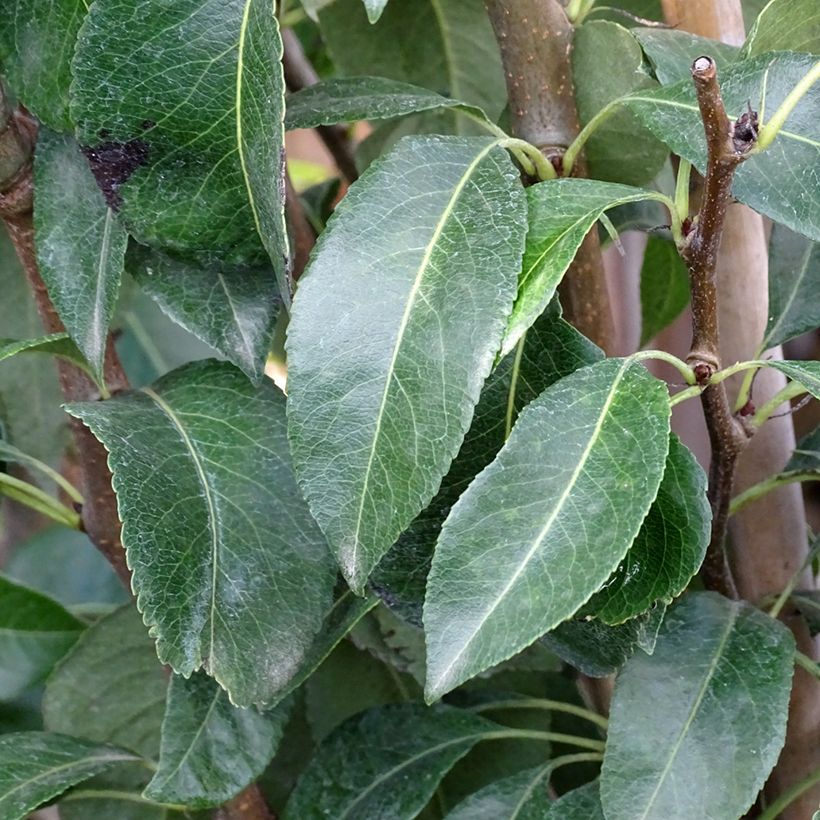

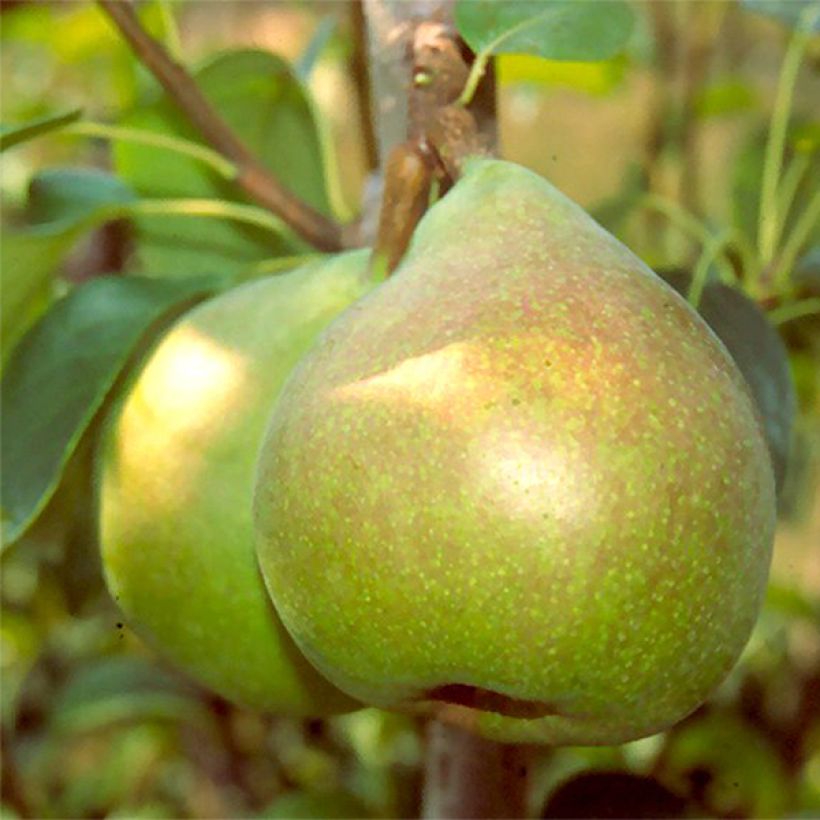

Plant habit
Fruit
Flowering
Foliage
Botanical data
Pyrus
communis
Doyenné du Comice
Rosaceae
Common Pear, European Pear
Western Europe
Other Pear trees
Planting and care
Fruit trees are ideally planted between October and March, excluding periods of frost. Container-grown plants can be planted all year round, except during periods of high heat or freezing temperatures.
Pear trees prefer cool and fertile soils, without stagnant moisture and preferably non-calcareous. Requiring warmth, it should be planted in a sunny location, sheltered from prevailing winds. Loosen the soil deeply, remove rocks and unwanted weeds. Add some sand to improve drainage. Dig a large planting hole at least 3 times the volume of the root ball. Make sure to separate the subsoil from the topsoil. Mix crushed horn and organic matter (potting soil, compost, etc.) with the subsoil and pour this mixture into the bottom of the planting hole. Place the root ball, cover with topsoil without burying the graft union, and firm it down. Water thoroughly (about 10L).
It may be beneficial to stake the pear tree by installing a guy wire system: plant 3 stakes in a triangle 50 cm (20in) around the trunk, and connect them together with pieces of wood. Protect the bark with a piece of rubber, for example, and attach the stakes to the trunk with metal wires.
Every year, in autumn, apply well-rotted compost on the surface. Then, in winter, add a small shovelful of wood ash, rich in potash, to improve fruiting. Hoe if necessary around the base of the tree. Water regularly, according to your climate, during the first two or three years.
Pear trees can be susceptible to various diseases and pests. To prevent scab (brown spots on leaves), brown rot (flower withering and fruit rot on the tree), and powdery mildew (white coating on leaves), spray with Bordeaux mixture and decoctions of horsetail. As for pests, the codling moth or fruit worm, a small caterpillar, can be controlled by installing bird and bat houses, by placing corrugated cardboard strips along the trunk, and by bagging the fruits in brown kraft paper. In case of aphid infestation, spray a mixture of water and black soap.
Planting period
Intended location
Care
-
, onOrder confirmed
Reply from on Promesse de fleurs
Ancient and local varieties
Haven't found what you were looking for?
Hardiness is the lowest winter temperature a plant can endure without suffering serious damage or even dying. However, hardiness is affected by location (a sheltered area, such as a patio), protection (winter cover) and soil type (hardiness is improved by well-drained soil).

Photo Sharing Terms & Conditions
In order to encourage gardeners to interact and share their experiences, Promesse de fleurs offers various media enabling content to be uploaded onto its Site - in particular via the ‘Photo sharing’ module.
The User agrees to refrain from:
- Posting any content that is illegal, prejudicial, insulting, racist, inciteful to hatred, revisionist, contrary to public decency, that infringes on privacy or on the privacy rights of third parties, in particular the publicity rights of persons and goods, intellectual property rights, or the right to privacy.
- Submitting content on behalf of a third party;
- Impersonate the identity of a third party and/or publish any personal information about a third party;
In general, the User undertakes to refrain from any unethical behaviour.
All Content (in particular text, comments, files, images, photos, videos, creative works, etc.), which may be subject to property or intellectual property rights, image or other private rights, shall remain the property of the User, subject to the limited rights granted by the terms of the licence granted by Promesse de fleurs as stated below. Users are at liberty to publish or not to publish such Content on the Site, notably via the ‘Photo Sharing’ facility, and accept that this Content shall be made public and freely accessible, notably on the Internet.
Users further acknowledge, undertake to have ,and guarantee that they hold all necessary rights and permissions to publish such material on the Site, in particular with regard to the legislation in force pertaining to any privacy, property, intellectual property, image, or contractual rights, or rights of any other nature. By publishing such Content on the Site, Users acknowledge accepting full liability as publishers of the Content within the meaning of the law, and grant Promesse de fleurs, free of charge, an inclusive, worldwide licence for the said Content for the entire duration of its publication, including all reproduction, representation, up/downloading, displaying, performing, transmission, and storage rights.
Users also grant permission for their name to be linked to the Content and accept that this link may not always be made available.
By engaging in posting material, Users consent to their Content becoming automatically accessible on the Internet, in particular on other sites and/or blogs and/or web pages of the Promesse de fleurs site, including in particular social pages and the Promesse de fleurs catalogue.
Users may secure the removal of entrusted content free of charge by issuing a simple request via our contact form.
The flowering period indicated on our website applies to countries and regions located in USDA zone 8 (France, the United Kingdom, Ireland, the Netherlands, etc.)
It will vary according to where you live:
- In zones 9 to 10 (Italy, Spain, Greece, etc.), flowering will occur about 2 to 4 weeks earlier.
- In zones 6 to 7 (Germany, Poland, Slovenia, and lower mountainous regions), flowering will be delayed by 2 to 3 weeks.
- In zone 5 (Central Europe, Scandinavia), blooming will be delayed by 3 to 5 weeks.
In temperate climates, pruning of spring-flowering shrubs (forsythia, spireas, etc.) should be done just after flowering.
Pruning of summer-flowering shrubs (Indian Lilac, Perovskia, etc.) can be done in winter or spring.
In cold regions as well as with frost-sensitive plants, avoid pruning too early when severe frosts may still occur.
The planting period indicated on our website applies to countries and regions located in USDA zone 8 (France, United Kingdom, Ireland, Netherlands).
It will vary according to where you live:
- In Mediterranean zones (Marseille, Madrid, Milan, etc.), autumn and winter are the best planting periods.
- In continental zones (Strasbourg, Munich, Vienna, etc.), delay planting by 2 to 3 weeks in spring and bring it forward by 2 to 4 weeks in autumn.
- In mountainous regions (the Alps, Pyrenees, Carpathians, etc.), it is best to plant in late spring (May-June) or late summer (August-September).
The harvesting period indicated on our website applies to countries and regions in USDA zone 8 (France, England, Ireland, the Netherlands).
In colder areas (Scandinavia, Poland, Austria...) fruit and vegetable harvests are likely to be delayed by 3-4 weeks.
In warmer areas (Italy, Spain, Greece, etc.), harvesting will probably take place earlier, depending on weather conditions.
The sowing periods indicated on our website apply to countries and regions within USDA Zone 8 (France, UK, Ireland, Netherlands).
In colder areas (Scandinavia, Poland, Austria...), delay any outdoor sowing by 3-4 weeks, or sow under glass.
In warmer climes (Italy, Spain, Greece, etc.), bring outdoor sowing forward by a few weeks.

































